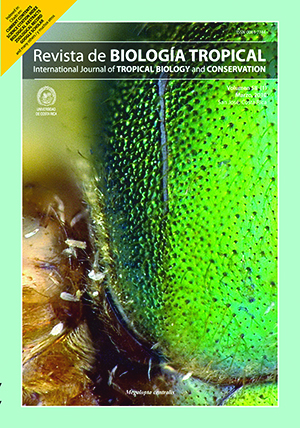Abstract
The pantropical fern genus Pteris L. has about 250 species of which 60 occur in the American continent. We studied the morphogenesis of the gametophyte, and the morphology of the young sporophytes of four species: P. cretica, P. ensiformis, P. multifida and P.vittata, together with a palyno-logical analysis that includes the ability of spores to germinate. Gametophytes were obtained trough in vitro culture techniques with agar-gellified Knudson medium. Young sporophytes were placed in earth-sand (3:1) sterile substrate. We used light and SEM microscopy. Triletes spores predominate, but monolete, tetralete, and other types of apertura are often found. The viability of spores is not affected by the variation, so the term spore polymorphism is applied to the condition occurring among these species. Spore polymorphism is similar in P. cretica and P. multifida. Germination occurs following the Vittaria type, 3-7 days after the sowing. Filamentous, 3-5 celled gametophytes were found in P. cretica, P. multifida and P. vittata, and 7-9 celled in P. ensiformis. Development of gametophytes takes place following Adiantum type and Ceratopteris type. The symmetry of the laminae differ in gametophytes, those of P. ensiformis and P. multifida are similar and differ from the other two species, P. cretica and P. vittata. Gametophytes of P. ensiformis, P. multifida and P. vittata are bisexual and protandric, while male gametophytes were found in P. cretica. Antheridia correspond to the common leptospo-rangiate type; they are cylindric in P. vittata and ovoid in the other three species. Archegonia necks have 4 rows of 4 cells each. The sporophytes complete their development 3 months after sowing, and have indument close to the adult plants. P. cretica shows obligated apogamy.
##plugins.facebook.comentarios##

This work is licensed under a Creative Commons Attribution 4.0 International License.
Copyright (c) 2010 Revista de Biología Tropical






